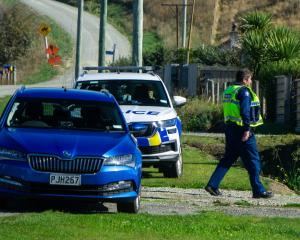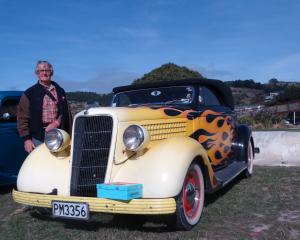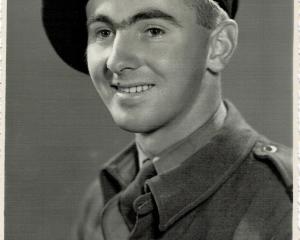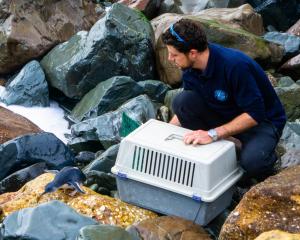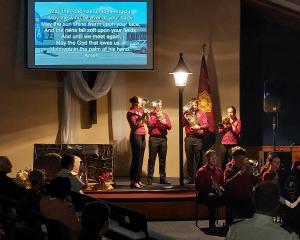The Omarama Volunteer Fire Brigade is concerned the St John-controlled emergency call centre is withholding calls from the brigade's first response unit.
The first response team is made up of four emergency service volunteers who can be called out to attend anything from a car crash to a house fire.
Brigade Chief Fire Officer Howard Williams said the community-funded group, attached to the brigade, wanted to be called to all medical events in its community and wanted to know what the issues in the area were.
Over the past decade, the brigade battled to get more notifications so it could deliver aid to its community faster than an ambulance based in Twizel, about 20 minutes away, or Kurow, about 30 minutes away, Mr Williams said.
"It depends on how St John is feeling at the time.
"You think it's going straight and all of a sudden it changes.
"They're absolutely shocking.''
Mr Williams said when people initially made emergency calls they connected with a St John-controlled call centre.
He also believed the reasons for the 10 years of mixed messages to his unit and to the community lay in bureaucracy.
New Zealand Fire Service (NZFS) national operations manager Paul Turner said in an emailed statement St John and the NZFS had a formal memorandum of understanding (MOU), developed to support patient care, including in more remote communities.
Mr Turner said the MOU governed co-ordination between the two services and set out processes about who should respond and when to medical and other emergencies, including procedures for dispatching vehicles, equipment, training levels, and criteria for establishing first response units.
"We understand the Omarama Fire First Response Unit would like to be able to respond to more medical emergencies and ambulance-type work.
"We have been in contact with the local brigade, and will visit the area together with St John in the next few months to discuss alternatives.''
The St John assistant director of clinical operations, field operations, Derek Liefting said in the same emailed statement the MOU defined the incidents to which a fire first response unit could not be dispatched.
"These incidents include those deemed not life-threatening, those requiring transport only, and those in which the patient or caller specifically requests that the fire first response not be dispatched, as can occur when the patient is known to the local fire brigade and/or the problem is so sensitive that the patient chooses to only have a response from St John.''
Mr Liefting said he wanted to assure Otago residents the standard of care Omarama residents received from St John was very high, and well above both the Ministry of Health targets and the national average.
In the past 12 months there were 48 emergency incidents in Omarama and St John allocated 44 of those to the Omarama Fire First Response Unit, subsequently backed up by a St John ambulance, which attended 36 of those incidents.
"When it comes to the most life-threatening, time critical cases, the ‘purple' and ‘red' incidents, we respond to 75% of these within 25 minutes well above our target, which is 50%.
"The Omarama Fire First Response Unit has made an important contribution to these outstanding results.''
However, Mr Williams said that there was confusion within the community as people tried to contact the first response unit and were told by St John communication centre staff the unit was not available to be called out.
"Rest assured we are 24/7, 365 days every year.
"It's frustrating not to be called.
"We continue to work on this issue, but every time we think we are getting somewhere and we will be called to all the local calls we find out this is not the case.''
Mr Williams said there had been no real warning the communication centre would behave in the way it did.
"We noticed ambulances arriving in town and we're not called. They're from Twizel or Kurow, so that's at least 20 minutes away.
"We can be out the door in under 10 minutes.''
He was unable to say whether lives were put at risk or people were unduly harmed because of the callout system.
Waitaki MP Jacqui Dean has in the past worked with St John and the Fire Service on their communication in the area.
"When I was involved in St John, I listened very carefully to their real concerns to respond to accidents and medical incidents, and to the Fire Service.
"My understanding at that time was there was going to be co-operation between the two services.
"I will follow up.''
Mr Williams said, in an ideal world every time someone in the Omarama area dialled 111 and asked for an emergency service, be it medical or the Fire Service, the first response unit would get turned out.
"So we can do a face-to-face assessment, not a telephone assessment where you have to explain to people on the phone what's wrong.''
He said a lot of people in his area had a high threshold for pain, so they would tell call centre staff they had a sore leg, but the problem could be a lot worse than they let on.
"If someone rings 111, turn us out as first responders.''




